Marlow White's swords and sabers have ceremonial blades. As such, they are built to strict military regulations to be used in drills, ceremonies, and displays. These blades are of the highest quality but are not sharpened for use as a weapon.
Field Manual 3-21.5: Appendix F
When performing Manual of Arms, please keep these important points in mind:
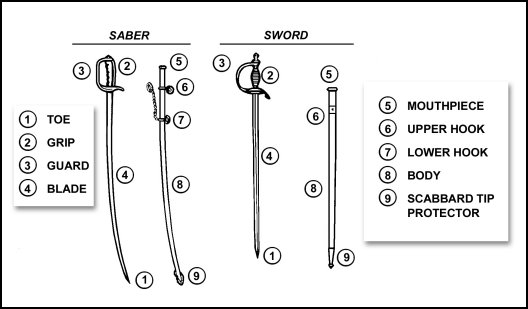
Figure F-1. Nomenclature, saber and sword.
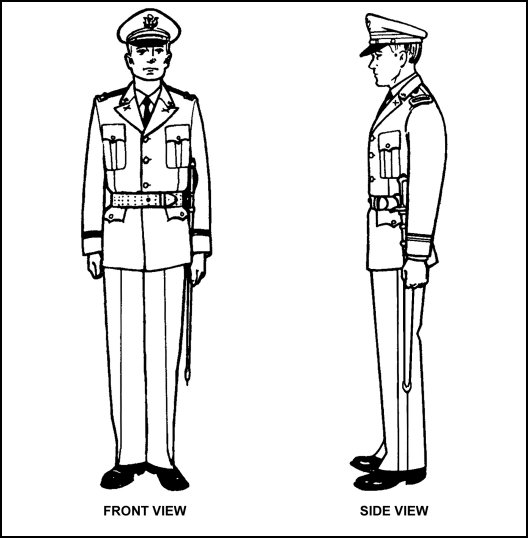
Figure F-2. Position of Attention.
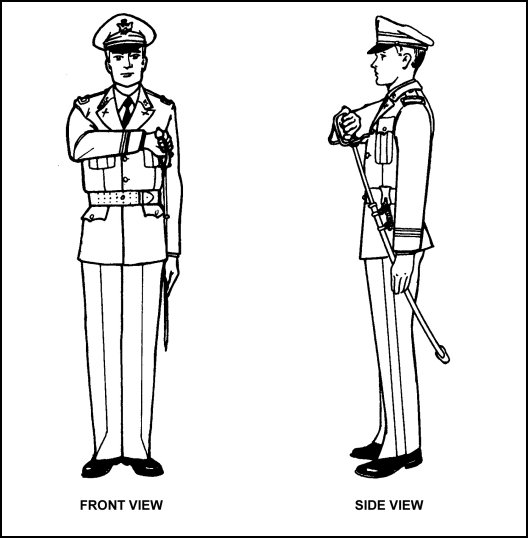
Figure F-3. Draw Saber (Sword).
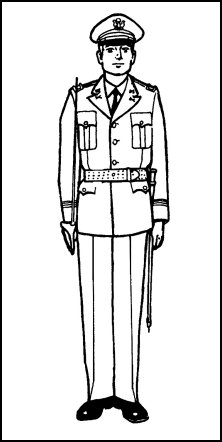
Figure F-4. Carry Saber (Sword).
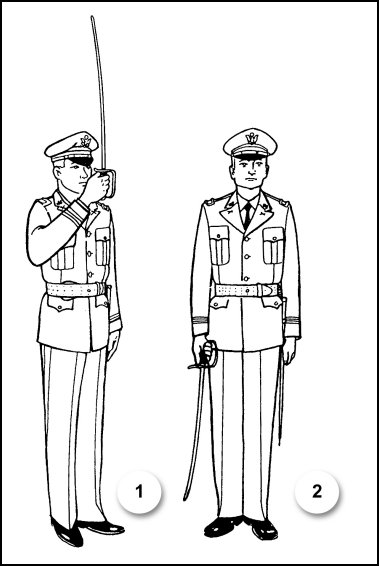
Figure F-5. Present Saber (Sword).
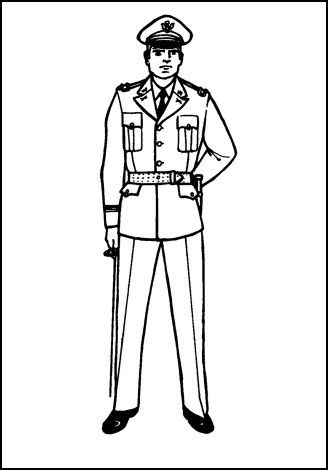
Figure F-6. Parade Rest.
- Blade tips are relatively sharp; exercise care during use.
- Sword and saber manual of arms is a developed and practiced skill. Do not be flamboyant when handling a drawn sword.
- WKC swords and sabers are intended for ceremonial use only. Horseplay, re-enactment fighting, and sword-to-sword impact is dangerous and can result in damage to the blade and personal injury.
- Children have a natural fascination with swords and often mistake a ceremonial sword for a weapon. Supervise children closely and teach them that the misuse of a sword is dangerous.
Army Sabers/Swords Manual of Arms
As a quick reference Marlow White is providing the applicable FM relating to Army Sabers/Swords Drill.
The saber is worn by officers while participating in ceremonies with troops under arms, or as directed. It is carried on the left side of the body attached to the belt by the scabbard chain with the guard of the saber to the rear. The sword is worn by all platoon sergeants and first sergeants while participating in ceremonies with troops under arms, or as directed. It is carried in the same manner as the officer’s saber.
F-1. NOMENCLATURE
The nomenclature for the saber is saber for all officers, model 1902. The blade is 31 inches long (more information about sword lengths). The nomenclature for the sword is noncommissioned officer’s sword, model 1840. Figure F-1 shows the nomenclature for pertinent parts of the saber (sword) and scabbard.

F-2. STANDING MANUAL OF ARMS
Execute Standing with the saber (sword) using the following procedures:
a. Attention. This is the position before the command Draw, SABER (SWORD) and after the command Return, SABER (SWORD). The hands are behind the trouser seams and the thumbs touch the first joint of the forefingers (Figure F-2).

b. Draw Saber (Sword). Figure F-3 shows the sequence for executing Draw Saber (Sword).

(1) At the preparatory command Draw, grasp the scabbard with the left hand turning the scabbard clockwise 180 degrees, tilting it forward to form an angle of 45 degrees with the ground. Take the saber (sword) grip in the right hand and pull the saber about 6 inches from the scabbard. The right forearm should now be roughly parallel to the ground.
(2) On the command of execution SABER (SWORD), the saber (sword) is pulled out of the scabbard and held in the position of Carry Saber (Sword). The saber (sword) should be held with the inner blade-edge riding in a vertical position along the forward tip of the right shoulder (Figure F-4).
c. Carry Saber (Sword). The Carry Saber (Sword) position is assumed under the following situations:
- To give commands.
- To change positions.
- By officers when officially addressing (or when officially addressed by) another officer, if the saber is drawn.
- By NCOs when officially addressing a Soldier, or when officially addressed by an officer, if the sword is drawn.
- Before returning the saber (sword) to the scabbard.
- At the preparatory command for (and while marching at) quick time.
(1) At Carry Saber (Sword) (Figure F-4), the officer (NCO) is at the Position of Attention. The saber (sword) is held in the right hand; the wrist is as straight as possible with the thumb along the seam of the trouser leg. The point of the blade rests inside the point of the shoulder and not along the arm. The saber (sword) is held in this position by the thumb and forefinger grasping the grip, and it is steadied with
(2) Present Saber (Sword) may be executed from the carry when serving in the capacity of commander of troops or serving in a command that is not part of a larger unit. On the preparatory command of Present, the saber (sword) is brought to a position (at the rate, of two counts) approximately four inches from the nose so that the tip of the saber (sword) is six inches from the vertical (1, Figure F-5). At the command of execution ARMS, the right hand is lowered (at the rate of two counts) with the flat of the blade upward, the thumb extended on the left side of the grip (2, Figure F-5), and the tip of the saber (sword) about six inches from the marching surface.
(3) On the command Order ARMS, the saber (sword) is returned to the position of Carry Saber (Sword).


d. Parade Rest. This position is assumed without moving the saber (sword) from the Order Arms position. At the command of execution, the left foot is moved about 10 inches to the left (of the right foot), and the left hand is placed in the small of the back, fingers extended and joined, palm to the rear (Figure F-6). At the command of execution ATTENTION, the left hand and foot are returned to the Position of Attention.

| NOTE: | Whenever the saber (sword) is at the Order Arms position the saber (sword) is straight, not at an angle inward or outward in relationship to the body. |
e. Return Saber (Sword). This movement is executed from Carry Saber (Sword) in three counts.
(1) At the preparatory command Return of the command
When performing Manual of Arms, please keep these important points in mind:

Figure F-1. Nomenclature, saber and sword.

Figure F-2. Position of Attention.

Figure F-3. Draw Saber (Sword).

Figure F-4. Carry Saber (Sword).

Figure F-5. Present Saber (Sword).

Figure F-6. Parade Rest.
- Blade tips are relatively sharp; exercise care during use.
- Sword and saber manual of arms is a developed and practiced skill. Do not be flamboyant when handling a drawn sword.
- WKC swords and sabers are intended for ceremonial use only. Horseplay, re-enactment fighting, and sword-to-sword impact is dangerous and can result in damage to the blade and personal injury.
- Children have a natural fascination with swords and often mistake a ceremonial sword for a weapon. Supervise children closely and teach them that the misuse of a sword is dangerous.
Army Sabers/Swords Manual of Arms
As a quick reference Marlow White is providing the applicable FM relating to Army Sabers/Swords Drill.
The saber is worn by officers while participating in ceremonies with troops under arms, or as directed. It is carried on the left side of the body attached to the belt by the scabbard chain with the guard of the saber to the rear. The sword is worn by all platoon sergeants and first sergeants while participating in ceremonies with troops under arms, or as directed. It is carried in the same manner as the officer’s saber.
F-1. NOMENCLATURE
The nomenclature for the saber is saber for all officers, model 1902. The blade is 31 inches long (more information about sword lengths). The nomenclature for the sword is noncommissioned officer’s sword, model 1840. Figure F-1 shows the nomenclature for pertinent parts of the saber (sword) and scabbard.

F-2. STANDING MANUAL OF ARMS
Execute Standing with the saber (sword) using the following procedures:
a. Attention. This is the position before the command Draw, SABER (SWORD) and after the command Return, SABER (SWORD). The hands are behind the trouser seams and the thumbs touch the first joint of the forefingers (Figure F-2).

b. Draw Saber (Sword). Figure F-3 shows the sequence for executing Draw Saber (Sword).

(1) At the preparatory command Draw, grasp the scabbard with the left hand turning the scabbard clockwise 180 degrees, tilting it forward to form an angle of 45 degrees with the ground. Take the saber (sword) grip in the right hand and pull the saber about 6 inches from the scabbard. The right forearm should now be roughly parallel to the ground.
(2) On the command of execution SABER (SWORD), the saber (sword) is pulled out of the scabbard and held in the position of Carry Saber (Sword). The saber (sword) should be held with the inner blade-edge riding in a vertical position along the forward tip of the right shoulder (Figure F-4).
c. Carry Saber (Sword). The Carry Saber (Sword) position is assumed under the following situations:
- To give commands.
- To change positions.
- By officers when officially addressing (or when officially addressed by) another officer, if the saber is drawn.
- By NCOs when officially addressing a Soldier, or when officially addressed by an officer, if the sword is drawn.
- Before returning the saber (sword) to the scabbard.
- At the preparatory command for (and while marching at) quick time.
(1) At Carry Saber (Sword) (Figure F-4), the officer (NCO) is at the Position of Attention. The saber (sword) is held in the right hand; the wrist is as straight as possible with the thumb along the seam of the trouser leg. The point of the blade rests inside the point of the shoulder and not along the arm. The saber (sword) is held in this position by the thumb and forefinger grasping the grip, and it is steadied with
(2) Present Saber (Sword) may be executed from the carry when serving in the capacity of commander of troops or serving in a command that is not part of a larger unit. On the preparatory command of Present, the saber (sword) is brought to a position (at the rate, of two counts) approximately four inches from the nose so that the tip of the saber (sword) is six inches from the vertical (1, Figure F-5). At the command of execution ARMS, the right hand is lowered (at the rate of two counts) with the flat of the blade upward, the thumb extended on the left side of the grip (2, Figure F-5), and the tip of the saber (sword) about six inches from the marching surface.
(3) On the command Order ARMS, the saber (sword) is returned to the position of Carry Saber (Sword).


d. Parade Rest. This position is assumed without moving the saber (sword) from the Order Arms position. At the command of execution, the left foot is moved about 10 inches to the left (of the right foot), and the left hand is placed in the small of the back, fingers extended and joined, palm to the rear (Figure F-6). At the command of execution ATTENTION, the left hand and foot are returned to the Position of Attention.

| NOTE: | Whenever the saber (sword) is at the Order Arms position the saber (sword) is straight, not at an angle inward or outward in relationship to the body. |
e. Return Saber (Sword). This movement is executed from Carry Saber (Sword) in three counts.
(1) At the preparatory command Return of the command